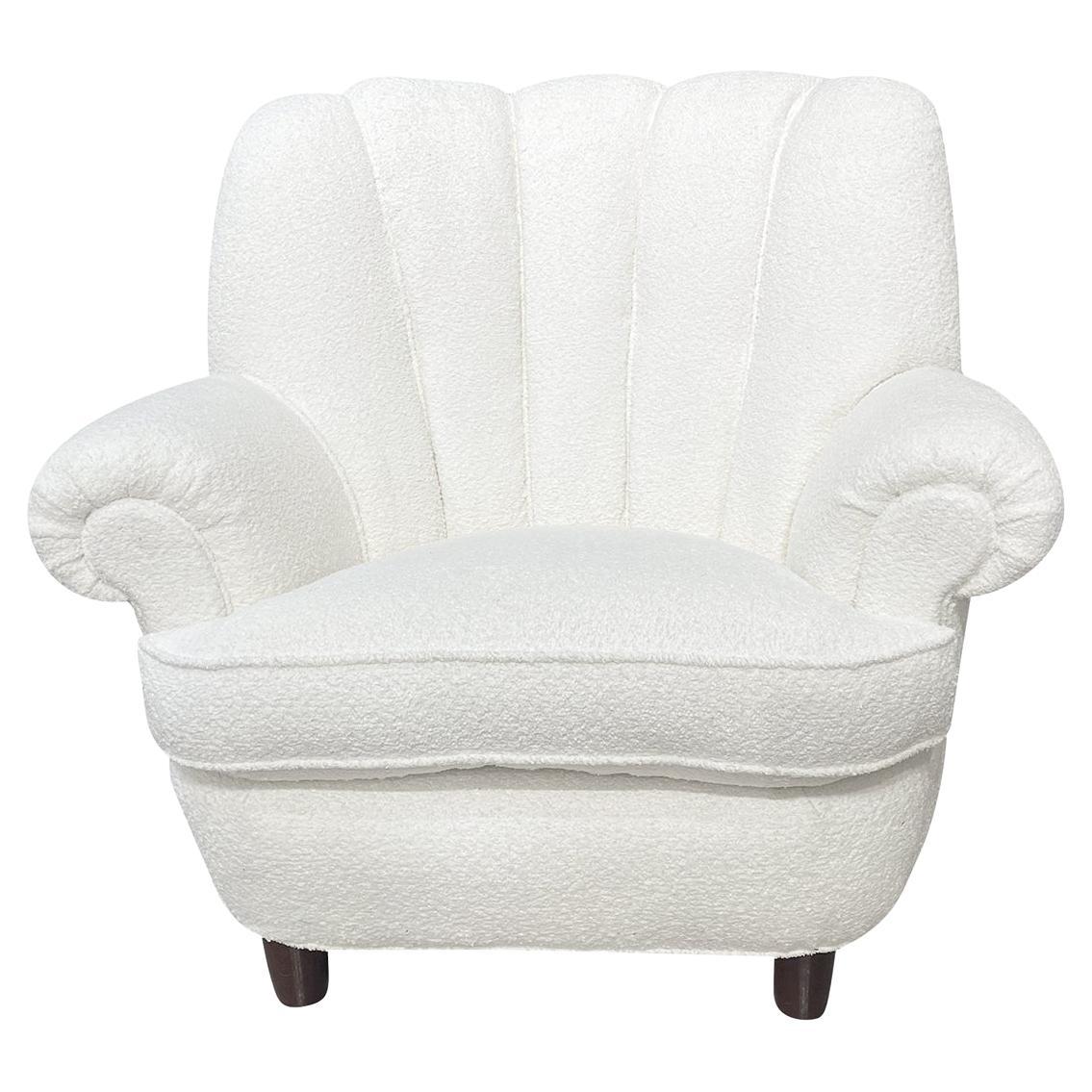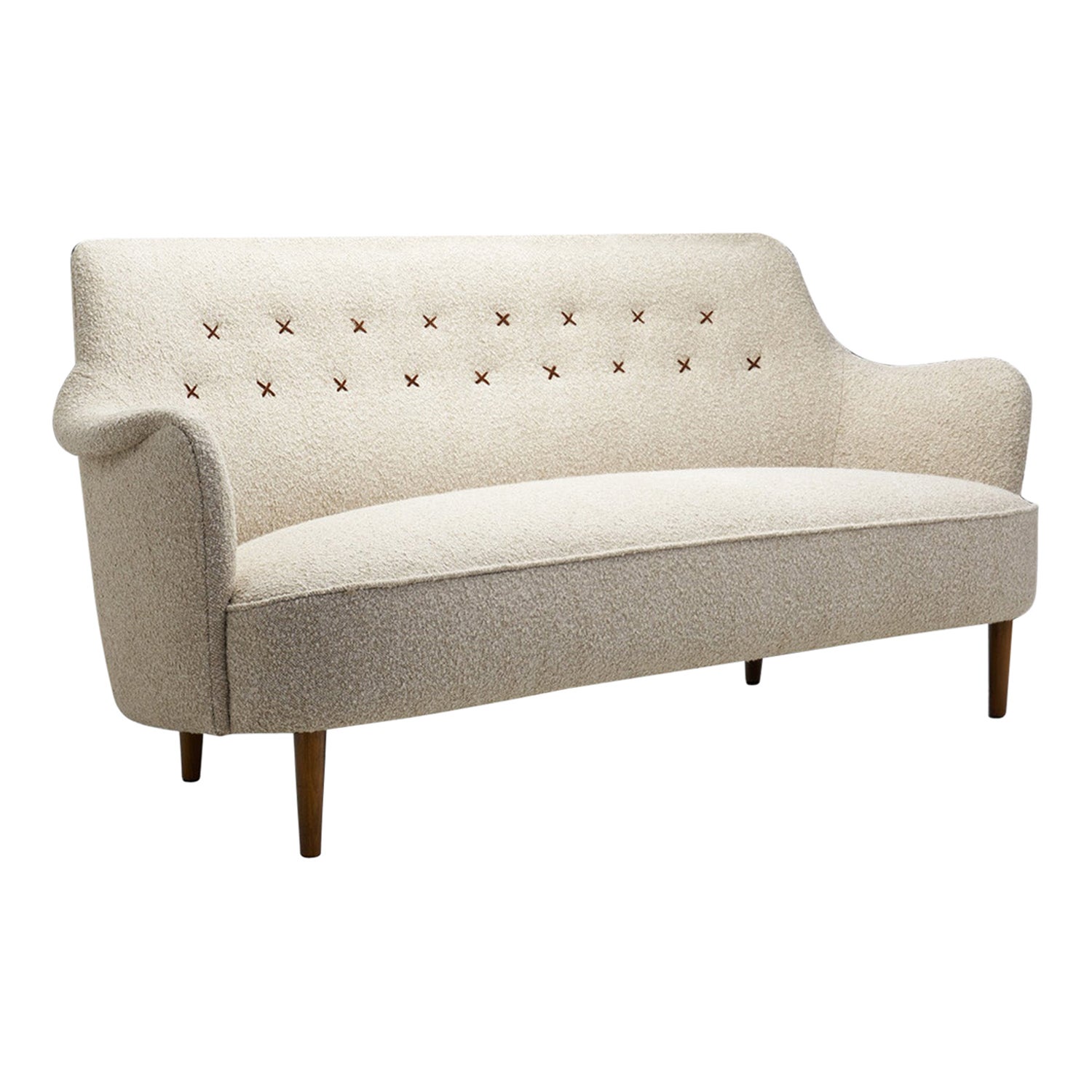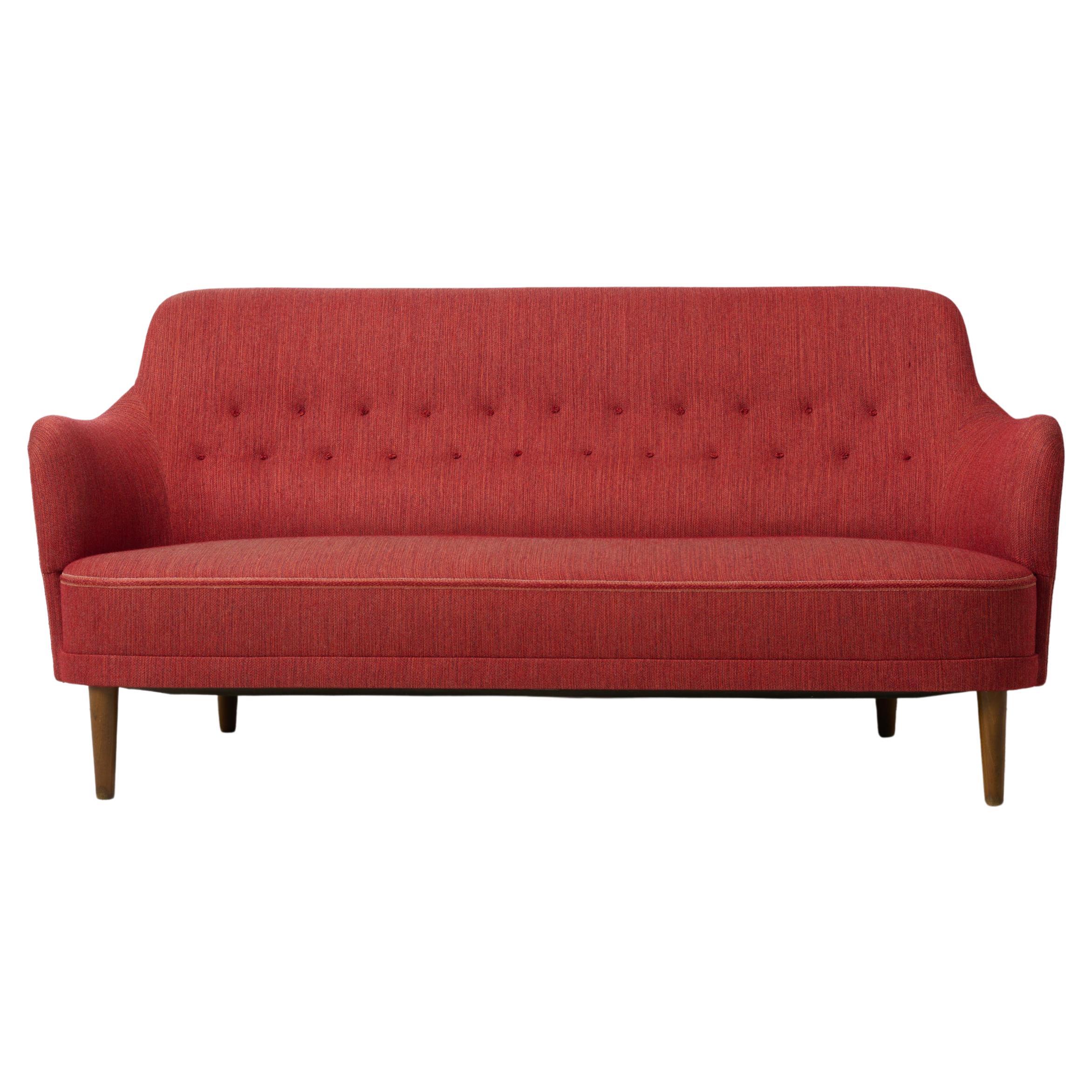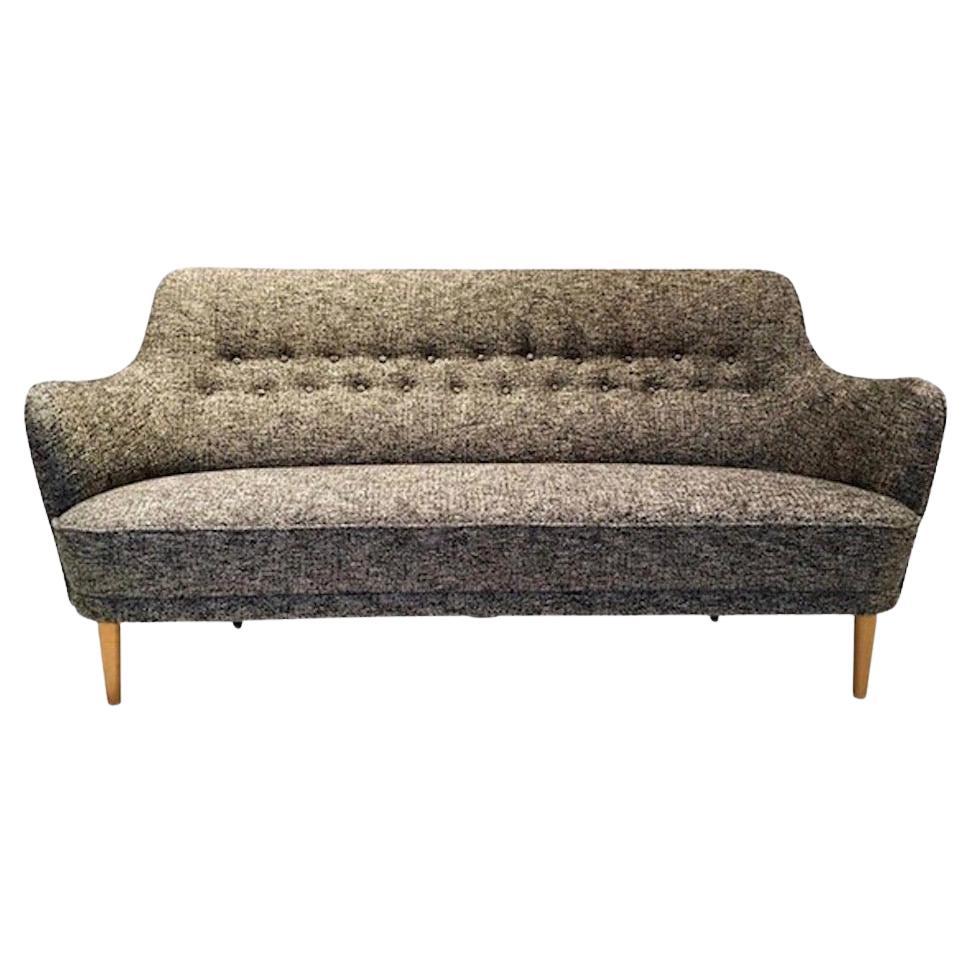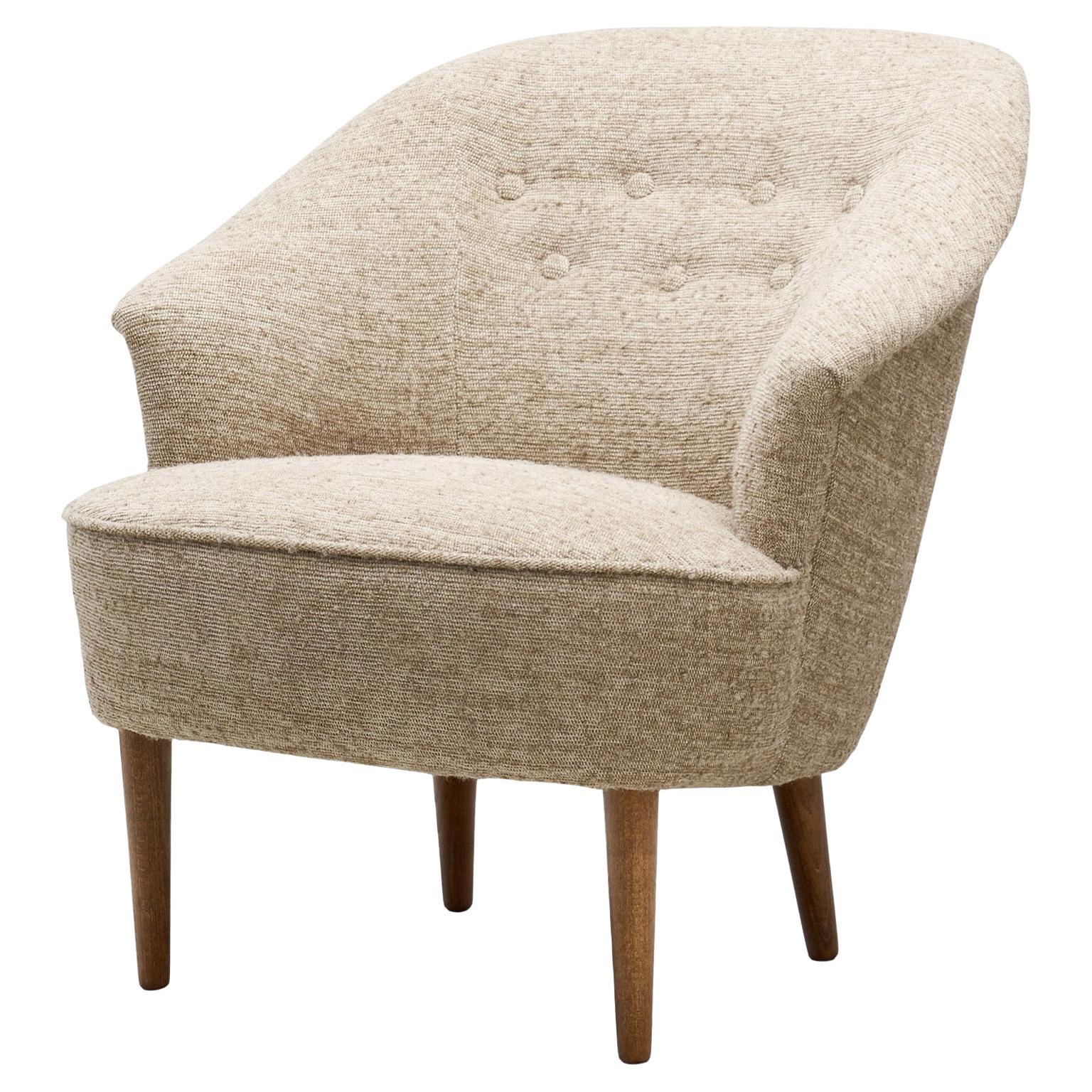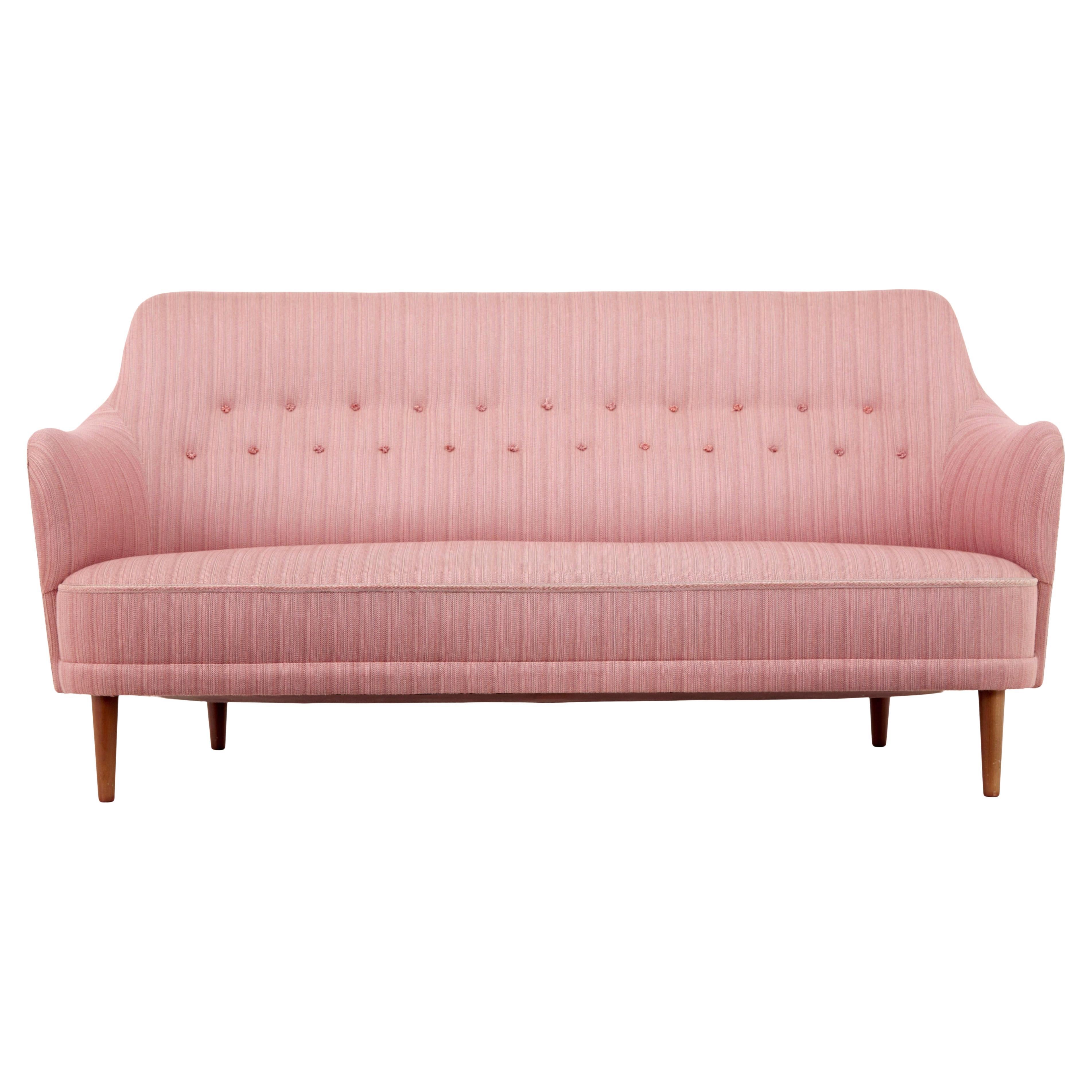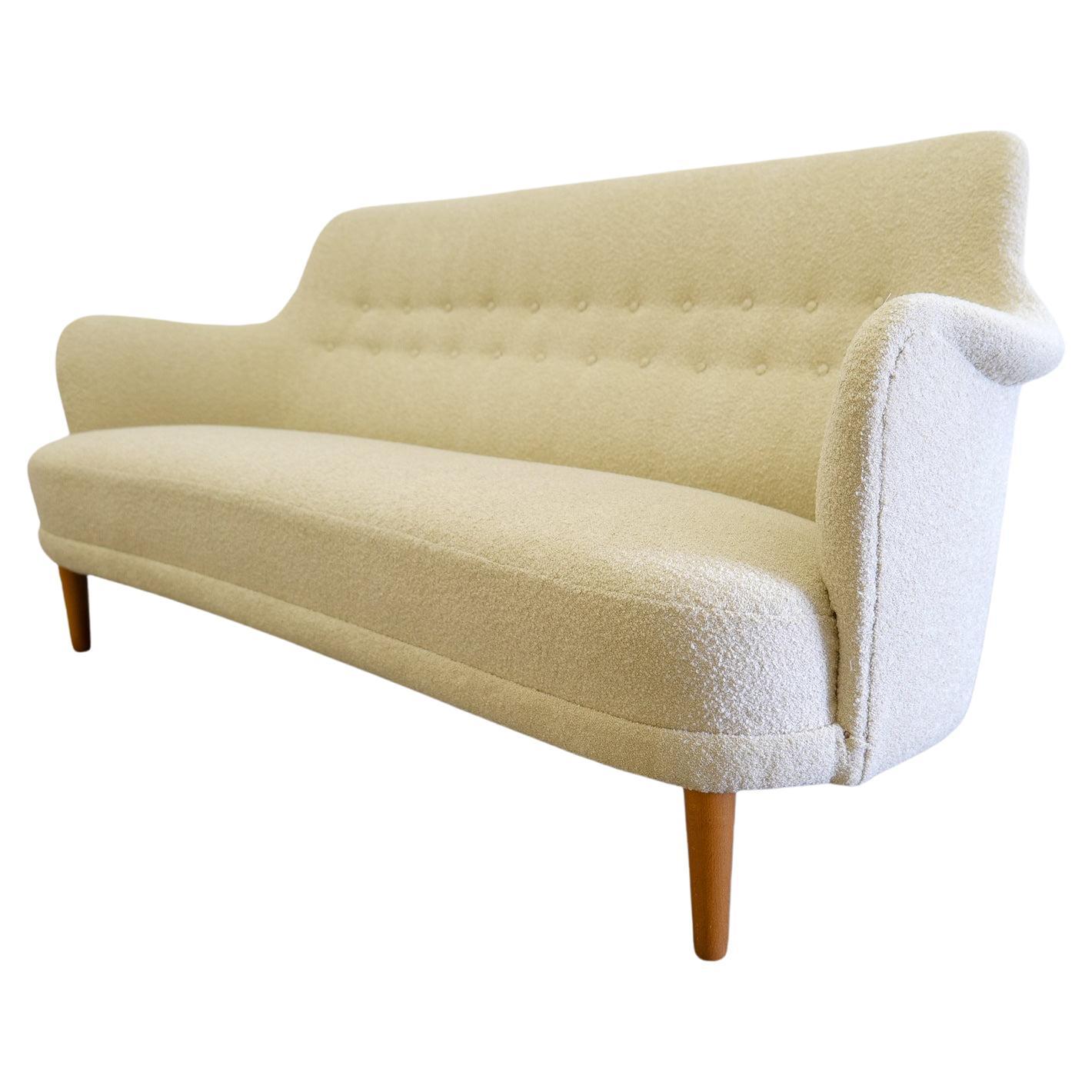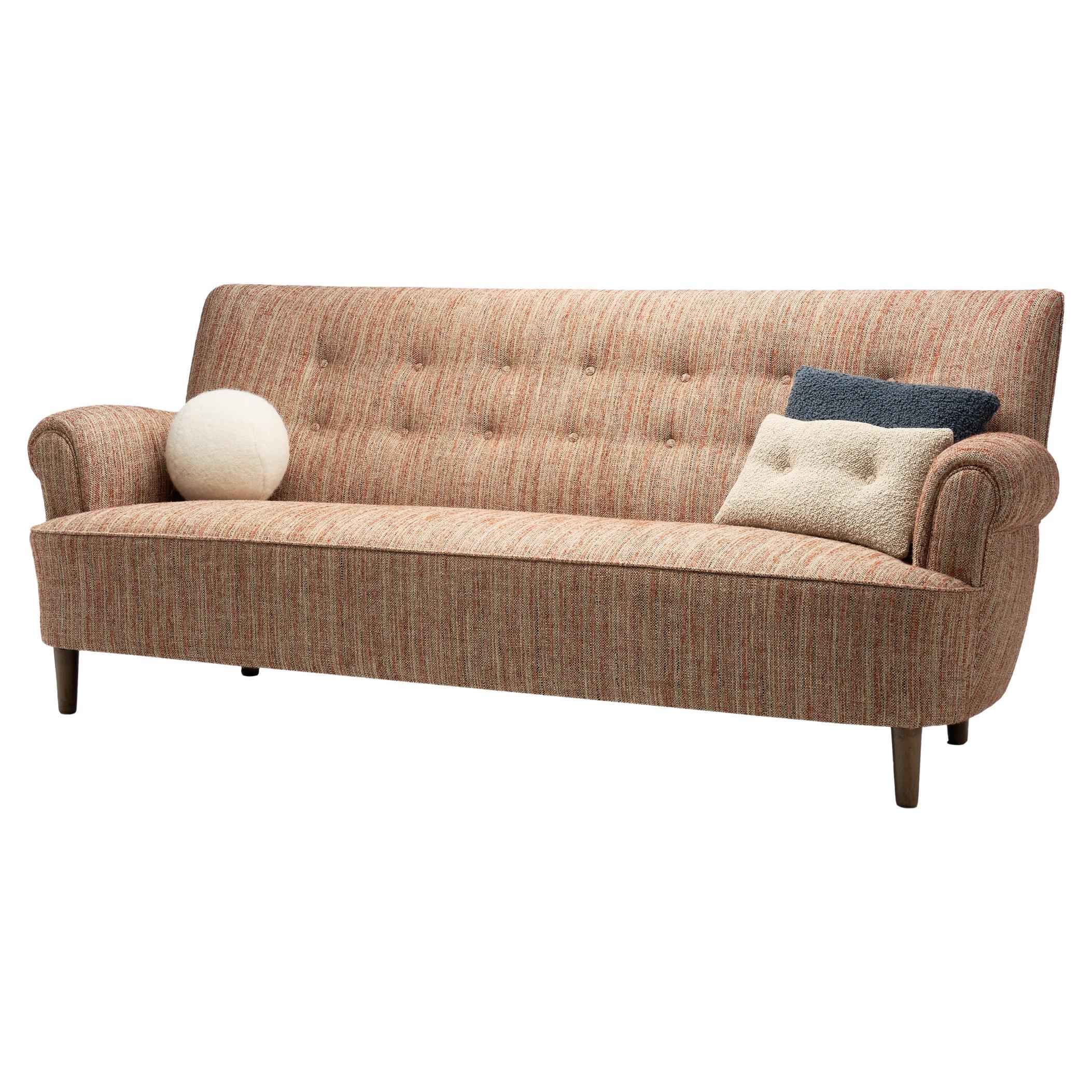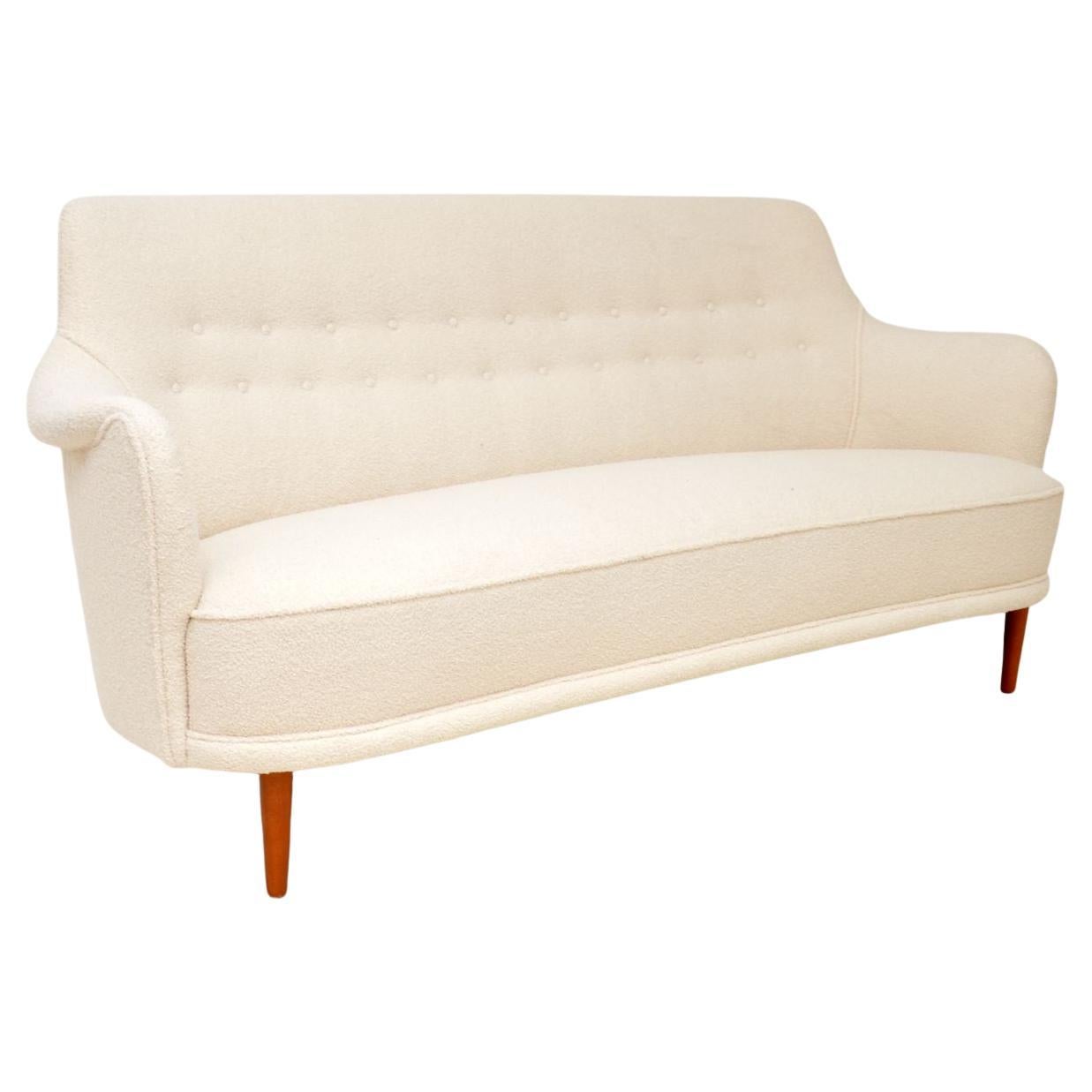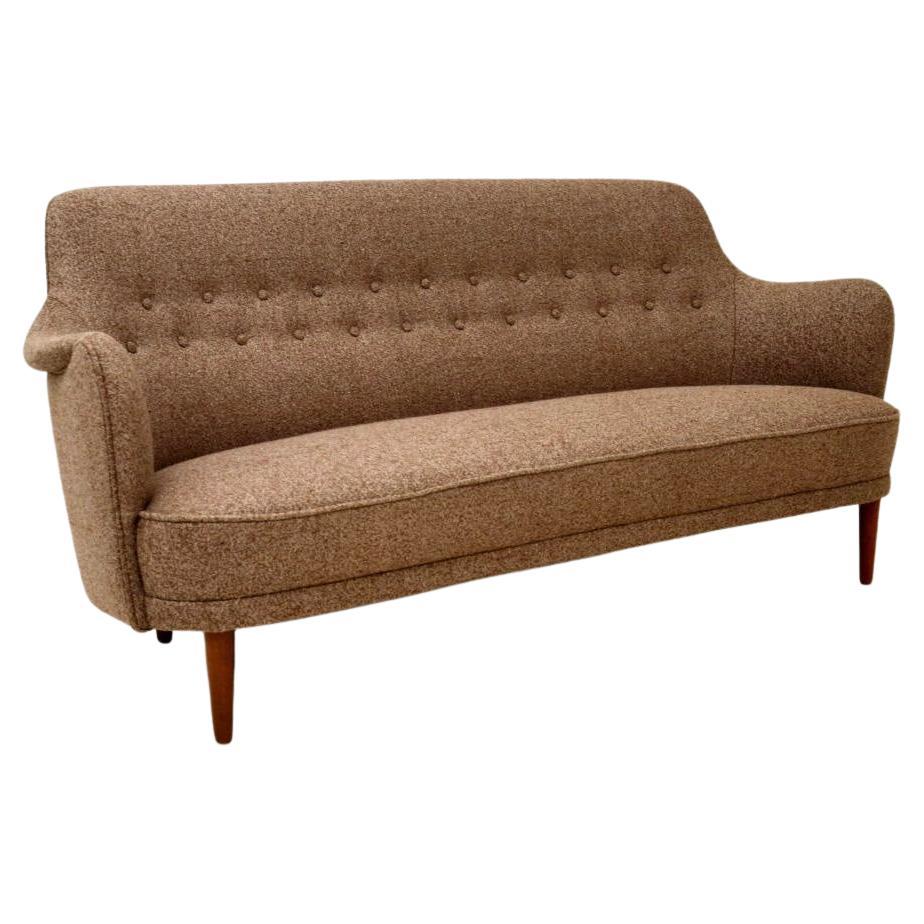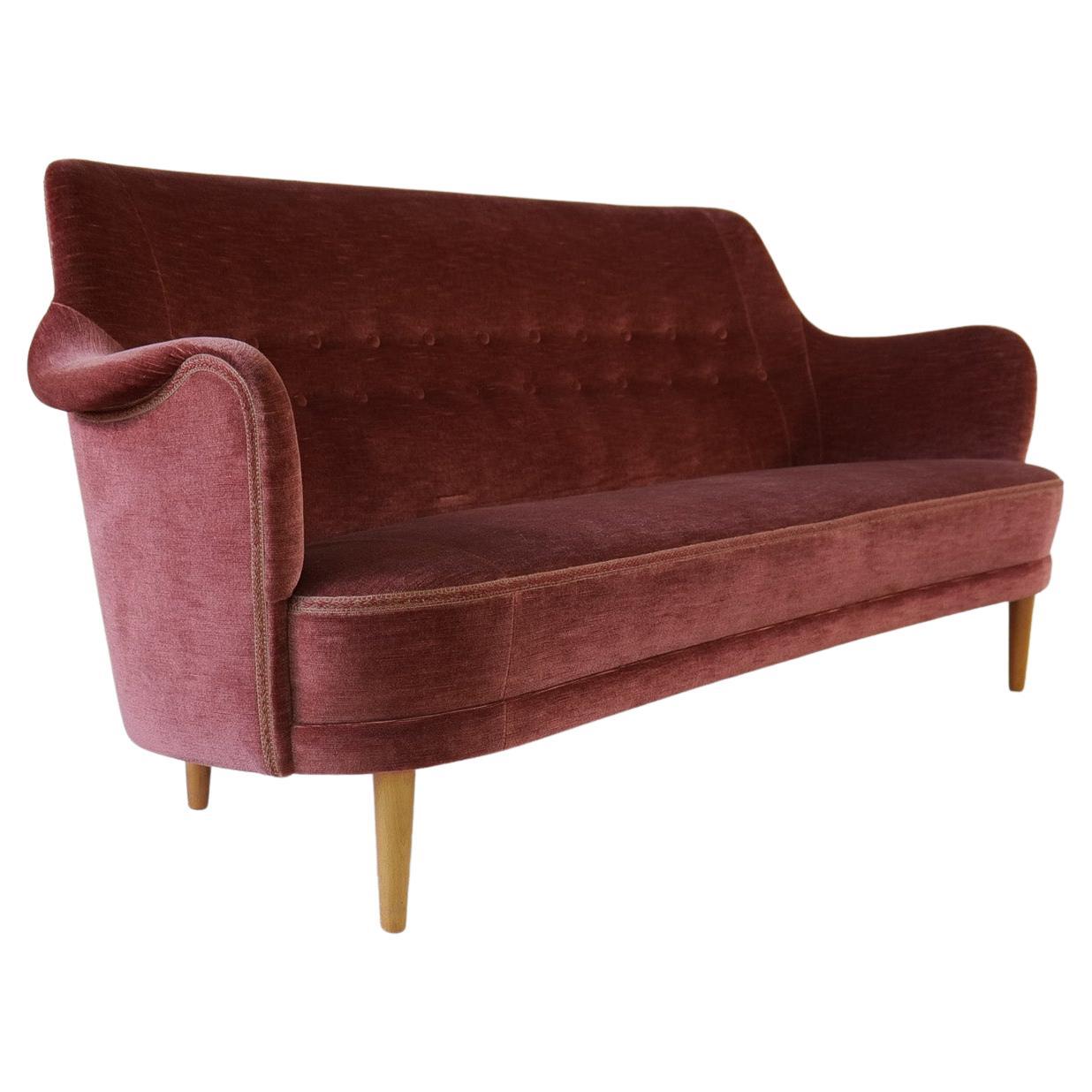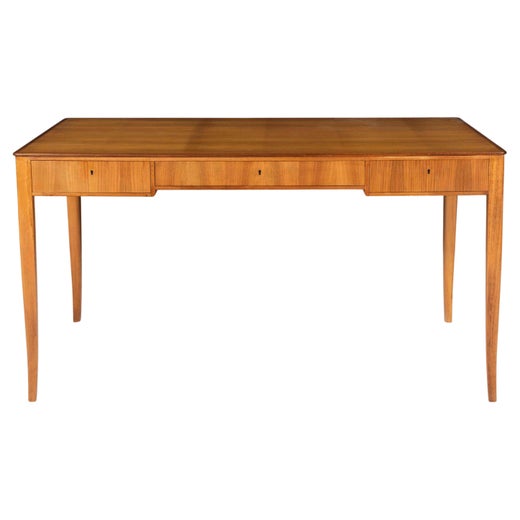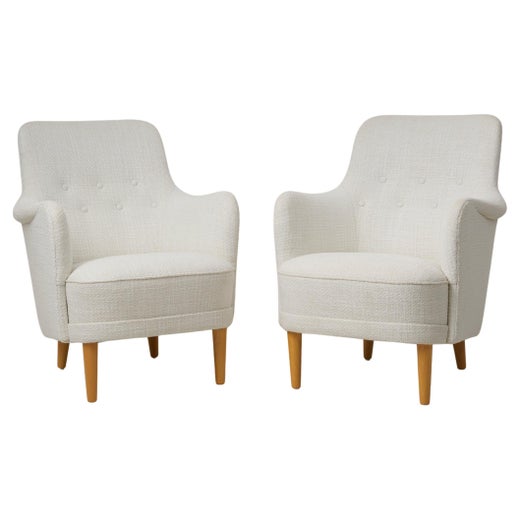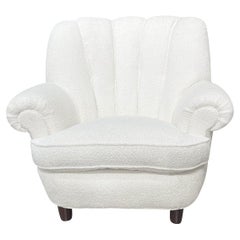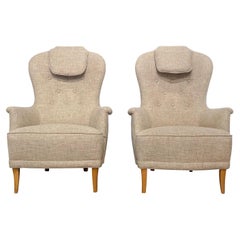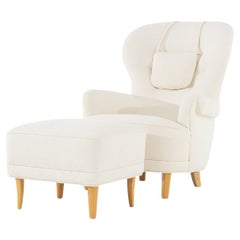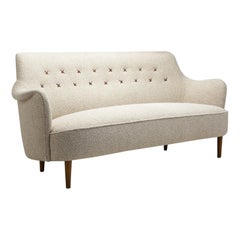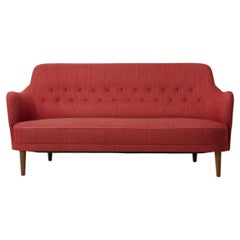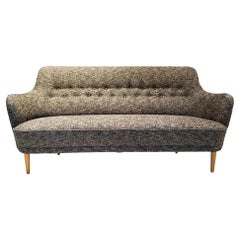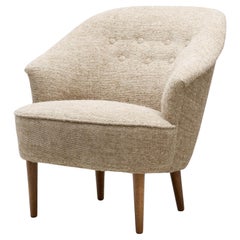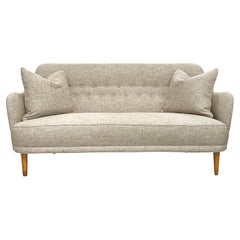
20th Century Swedish OH Sjögren Beechwood Samsas, Sofa - Settee by Carl Malmsten
View Similar Items
20th Century Swedish OH Sjögren Beechwood Samsas, Sofa - Settee by Carl Malmsten
About the Item
- Creator:
- Dimensions:Height: 34 in (86.36 cm)Width: 73.5 in (186.69 cm)Depth: 29 in (73.66 cm)
- Style:Mid-Century Modern (Of the Period)
- Materials and Techniques:
- Place of Origin:
- Period:
- Date of Manufacture:circa 1940 - 1960
- Condition:Reupholstered. Wear consistent with age and use.
- Seller Location:West Palm Beach, FL
- Reference Number:1stDibs: LU1622239249352
Carl Malmsten
Carl Malmsten, a prominent furniture designer and educator associated with Swedish modernism, enjoyed immense popularity for his shapely sofas and armchairs in luscious color palettes. Malmsten believed that light — much like our eyes and bodies — doesn’t like to bump into sharp objects. Smooth edges, on the other hand, are kinder to the eye and and to our touch, and allow light to softly bounce off surfaces. Malmsten felt that if his furniture didn’t “serve well” in the home, it had no business being there.
Malmsten’s career essentially began in 1915, when his submissions for a competition to furnish the new Stockholm City Hall were first- and second-place prize winners. In the 1920s, his profile soared. He won a prize at the International Exhibition of Modern Decorative and Industrial Arts — the show that brought the Art Deco style to worldwide attention — and quickly became one of the most sought-after designers of commercial seating in Sweden.
Malmsten was soon contracted to design chairs, tables and other furniture for the Stockholm Concert Hall, the Swedish Institute in Rome and the Waldorf Astoria hotel in New York. His famous Art Nouveau-influenced Stadshusstolen chair, designed for Stockholm City Hall in 1916, is a highlight of the city’s recently opened Museum of Furniture Studies. Malmsten expanded into interior design and created a luxurious, well-appointed living room in the palace of then-Crown Prince Gustaf Adolf and his bride, Crown Princess Louise.
In the 1930s, Malmsten clashed with critics when he voiced his opposition to functionalism. Like Danish modernist Kaare Klint, he favored using quality local materials and prized traditional craftsmanship. Malmsten’s furniture draws on graceful neoclassical influences, and he said that extreme functionalism contributed to “sterile” interiors — while the curving contours of his work may share ground with furniture designed by Alvar Aalto or Bruno Mathsson, Malmsten differed with Bauhaus eminences and some Scandinavian modernists on their prioritization of functionalism.
For an exhibition in 1956 at the Röhsska Museum in Gothenburg, Malmsten designed furniture that was intended for mass production — and his striking designs began to make their way into middle-class Swedish homes owing to Malmsten’s partnerships with manufacturers such as O.H. Sjögren. Until then, he had built his pieces at the school he founded in the 1930s or had them made by artisans at several small local workshops.
Malmsten founded a number of schools for design and collaborated with other designers who shared his philosophy of “hand and mind in creative collaboration.” These included the esteemed textile artist Märta Måås Fjetterström, whose pieces he included in exhibits and even his own home.
On 1stDibs, find vintage Carl Malmsten seating, tables, cabinets and more.
O.H. Sjögren
From its humble beginnings as a saddlery more than 100 years ago, O.H. Sjögren has grown into one of Sweden’s largest upholstered furniture manufacturers and a leading contributor to Scandinavian modern style in the 20th and 21st centuries.
O.H. Sjögren was founded in 1902 by Oskar Herbert Sjögren, then a 25-year-old saddlemaker and journeyman, who took over a saddlery in Tranås, Sweden. By 1914, at the onset of World War I, Sjögren’s business had grown as supplies such as pack saddles and life belts were in high demand for Sweden’s military. In 1917, with the war in Europe still ongoing, O.H. Sjögren began a collaboration with the neighboring company Tranås Vagnfabrik to upholster seats for horse-drawn carriages. However, with the carriage market in decline by the 1930s, O.H. Sjögren shifted its operations to furniture upholstery.
From 1936 to 1973, O.H. Sjögren was helmed by Oskar’s sons, Ollie and Gustaf, who were determined to produce impeccable Scandinavian furniture. The manufacturer soon gained its largest and most important client, NK (Nordiska Kompaniet) in Stockholm, followed by renowned Swedish designer Carl Malmsten in 1956.
Malmsten’s partnership with O.H. Sjögren throughout the 1950s and 1960s was a great success. Together, the designer and manufacturer produced a wide variety of mid-century modern seating, such as the plush, classic Samsas sofa, the Lata Greven (Lazy Countess) lounge chair and the popular Farmor armchair.
In 1973, Ollie’s son Erik became head of O.H. Sjögren and attracted several major design brands, including Svenskt Tenn. Although the Swedish furniture industry was threatened by cheaper, imported, mass-produced furniture from elsewhere in Europe and Asia during the 1980s and 1990s, O.H. Sjögren endured in its success due to its reputation for high quality and formidable designs.
Since 2005, O.H. Sjögren has been run by its fourth generation from the Sjögren family — Oskar’s great-grandsons Håkan and Jakob. The company continues to produce many of Malmsten’s most popular seating, as well as Svenskt Tenn’s classic designs.
On 1stDibs, find a range of vintage O.H. Sjögren seating.
More From This Seller
View AllMid-20th Century Swedish Mid-Century Modern Club Chairs
Fabric, Bouclé, Upholstery, Beech
Mid-20th Century Swedish Mid-Century Modern Settees
Fabric, Cotton, Upholstery, Beech
Mid-20th Century Swedish Mid-Century Modern Lounge Chairs
Fabric, Cotton, Upholstery, Birch
Mid-20th Century Swedish Mid-Century Modern Living Room Sets
Fabric, Bouclé, Upholstery, Beech
Early 20th Century Swedish Mid-Century Modern Settees
Fabric, Cotton, Upholstery, Beech
Mid-20th Century Swedish Mid-Century Modern Armchairs
Fabric, Upholstery, Birch
You May Also Like
Vintage 1960s Swedish Scandinavian Modern Sofas
Fabric, Wood
Mid-20th Century Swedish Scandinavian Modern Sofas
Fabric, Pine
Mid-20th Century Swedish Scandinavian Modern Sofas
Fabric, Upholstery, Beech
Late 20th Century Swedish Scandinavian Modern Armchairs
Fabric, Wood
Mid-20th Century Swedish Mid-Century Modern Sofas
Fabric, Beech
Vintage 1960s Swedish Scandinavian Modern Sofas
Fabric
